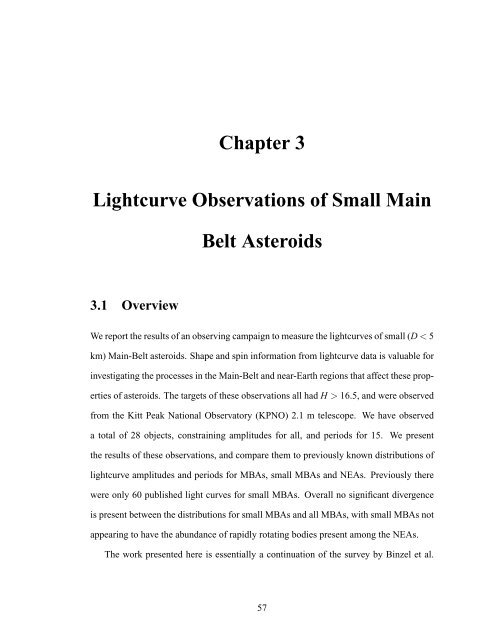Forming Binary Near-Earth Asteroids From Tidal Disruptions
Forming Binary Near-Earth Asteroids From Tidal Disruptions
Forming Binary Near-Earth Asteroids From Tidal Disruptions
Create successful ePaper yourself
Turn your PDF publications into a flip-book with our unique Google optimized e-Paper software.
Chapter 3Lightcurve Observations of Small MainBelt <strong>Asteroids</strong>3.1 OverviewWe report the results of an observing campaign to measure the lightcurves of small (D < 5km) Main-Belt asteroids. Shape and spin information from lightcurve data is valuable forinvestigating the processes in the Main-Belt and near-<strong>Earth</strong> regions that affect these propertiesof asteroids. The targets of these observations all had H > 16.5, and were observedfrom the Kitt Peak National Observatory (KPNO) 2.1 m telescope. We have observeda total of 28 objects, constraining amplitudes for all, and periods for 15. We presentthe results of these observations, and compare them to previously known distributions oflightcurve amplitudes and periods for MBAs, small MBAs and NEAs. Previously therewere only 60 published light curves for small MBAs. Overall no significant divergenceis present between the distributions for small MBAs and all MBAs, with small MBAs notappearing to have the abundance of rapidly rotating bodies present among the NEAs.The work presented here is essentially a continuation of the survey by Binzel et al.57












